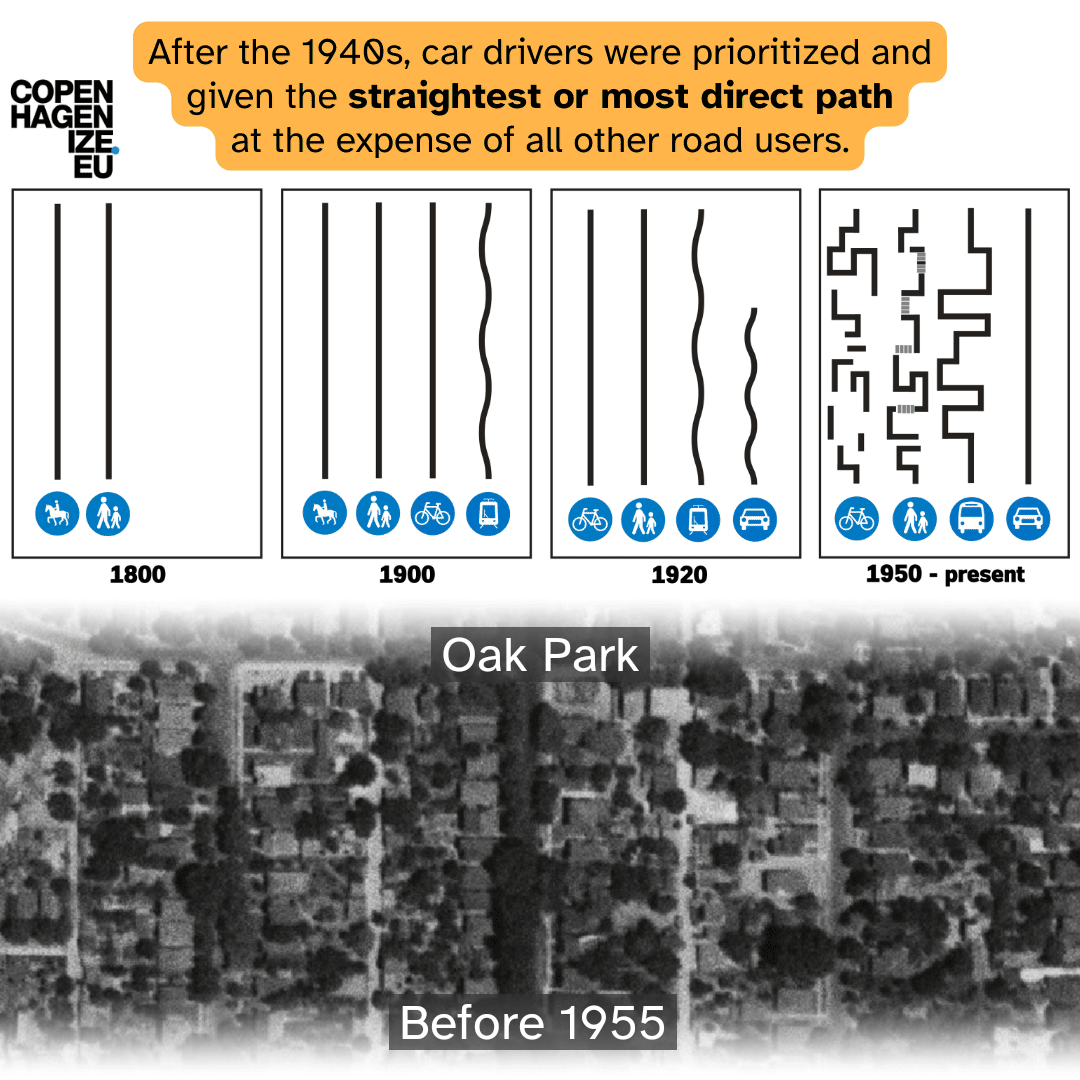
A modal filter at D & 14th
This post is part of a Street Design Standards series.
History of modalities
Marked crosswalks, bike lanes, and traffic lights are just a few different “safety” treatments that are notably missing from any pre-1920 photo of Sacramento. Yet, traffic violence was not a defining issue of the time like it is today. The fact is that pre-1920 streets were safe even without numerous safety measures because private cars were not a common mode of transportation.


What crosswalks, bike lanes, and traffic lights have in common is that they coerce pedestrians and cyclists into the last few remaining dedicated car-free spaces, and make explicit that they can be legally at-fault when stepping out of line. Automobile interests made this clear when they embarked on significant efforts to vilify “jaywalking”. Today, the majority of public space in Sacramento is dedicated for cars and to facilitate their flow exclusively, at the expense of the safety and convenience for all other road users.
Modal filters
Also known as traffic diverters, or permeable filters, modal filters hold the key to bringing back the pre-1920 sense that streets are for everybody and can be a shared space where all traffic can safely and slowly mix. They do this by reducing the number of cars on a given street or in a neighborhood via bollards or other physical barriers.

There is an abundance of local and international evidence that modal filters reduce traffic injuries and fatalities, and even reduce crime by increasing eyes on on the street. In the late 90s, Sacramento experimented with an integrated traffic calming approach within a ~50 block area of the grid, comprising modal filters, traffic circles, pedestrian refuges, and even one-way to two-way conversions. According to crash statistics, this is now one of the safest neighborhoods to walk.


Where and how?
A big part of the Strong Towns approach is to humbly observe how people engage with the city. With regards to streets, that could mean observing where most people walk or bike. It could also mean observing where most pedestrians or cyclists are involved in a traffic collision. Armed with this knowledge, we can take steps to amplify the things that lead to success.
For example, if we were to observe where most people cycle in East Sac, we would find that M St. is the #1 street for both walking and cycling according to data from Strava and the City of Sacramento. There is clear demand for active transportation on M St., and some might say the data paints a picture of desire lines. Modal filters along M St. could significantly improve the safety and experience of people who already walk or cycle down this street, as well as open it up to even more people.

We can also observe where people are currently struggling. The city did just that when they found that cyclists and car drivers alike were frequently crashing while trying to cross Broadway on 2nd Ave in Oak Park. The solution? Modal filters!

Modal filters are for everybody
Some may rightfully suspect that modal filters are a net negative for drivers. After all, their alternative name traffic diverter suggests that all that traffic would just end up back on major collectors and arterials which are already struggling with congestion today. However, modal filters have one more trick up their sleeve: traffic evaporation.

Measures that reduce traffic capacity tend to reduce overall traffic. After an adjustment period, people eventually change their habits to avoid the congestion. That could be as simple as changing when they drive to avoid rush hour. Some savvy drivers may choose to drive a shorter distance or just walk to a local business in lieu of big-box shopping. Some might downsize from a 3-car family to a 2-car family. Over a period of years, more people may strategically decide to live closer to jobs and shops, and more businesses may strategically decide to locate themselves closer to where people live.
Cities have known for decades now that the suburban experiment is a failed experiment. Modal filters are an important aspect of healing neighborhoods and reversing the experiment.
Leave a Reply